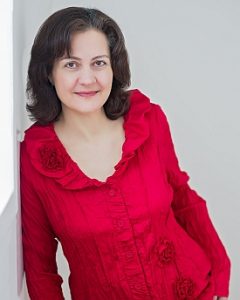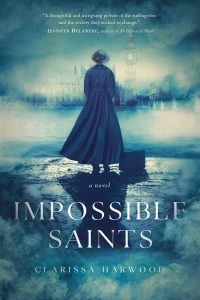Past Imperfect: the Complications of Historical Authenticity
 People who don’t usually read historical fiction are often surprised to find out how much research goes into a historical novel. Yes, novelists use their imaginations to flesh out the details, but we also do extensive research to make the setting of our novels feel authentic to the reader.
People who don’t usually read historical fiction are often surprised to find out how much research goes into a historical novel. Yes, novelists use their imaginations to flesh out the details, but we also do extensive research to make the setting of our novels feel authentic to the reader.
All good novels incorporate sensory details, but it’s especially difficult to know how people in bygone eras experienced their world through sight, hearing, taste, smell, and touch. A book published in the 1800s might describe the sweet taste of a custard, for example, but does modern custard taste the same, and would we describe it similarly? To further complicate the historical novelist’s relentless desire to recreate the past, we often forget that at any given moment, people live in multiple eras. In other words, they experience the past simultaneously with the present.
For example, a relaxing day in my life in 2018 might look like this: I’m re-reading Barchester Towers by Anthony Trollope, published in 1857, while listening to my parents’ LP of the musical South Pacific, recorded in 1949. When I need a break from reading, I go into the kitchen and bake cookies from my grandmother’s recipe, first created in the 1930’s. Then I go to the piano and play a Beethoven sonata composed in 1798. After that I might do some housecleaning while playing my Ultimate Dance Party 1997 CD. This CD has no discernable musical value, but it has the charm of nostalgia because I played it repeatedly and loudly in my car to keep myself awake when I drove across the country with my cat and all my worldly possessions. That experience was pretty traumatic at the time (especially for my cat), but I’m still proud of myself for doing it, and Dance Party ’97 will always be the soundtrack for that big move.
Shouldn’t an authentic historical novel include a multiplicity of eras, too? How often does such a blend of past and present appear in historical fiction, especially a blend of old and new technologies? As both an academic and a novelist, I focus my research mainly on the late Victorian period, but I had to move Impossible Saints into the first decade of the 20th century to accommodate Lilia, my relentlessly modern suffragette. I wrote this blog post about what I learned from moving the novel’s setting from 1897 to 1907.
 The typical way of including past and present in fiction is to make the older characters cling to outdated ways of life and resist new ideas that the younger people embrace (think of the Dowager Countess’s opinion of electric light in Downton Abbey). But this isn’t always the case. We all know a millennial who is an old soul, who loves history and wears vintage clothing. Or the octogenarian who uses Snapchat and Instagram to document her life. In every family and social circle there is someone who is obsessed with the latest technology and someone else who refuses to use it. And they’re not always the people you might expect.
The typical way of including past and present in fiction is to make the older characters cling to outdated ways of life and resist new ideas that the younger people embrace (think of the Dowager Countess’s opinion of electric light in Downton Abbey). But this isn’t always the case. We all know a millennial who is an old soul, who loves history and wears vintage clothing. Or the octogenarian who uses Snapchat and Instagram to document her life. In every family and social circle there is someone who is obsessed with the latest technology and someone else who refuses to use it. And they’re not always the people you might expect.
Perhaps it’s impossible to express such a multiplicity of viewpoints in historical fiction when the lines between generations (and decades) are so difficult to draw. Even from my vantage point in 2018, I can’t always tell the difference between clothes that were trendy in the 1990s vs. the first decade of the 21st century. Maybe that says more about my impaired fashion sense than anything else, but I can certainly recognize the differences in clothing between the 1970s and 1980s, my formative years. How much more difficult for the modern writer (or reader) of historical novels to recognize the fine distinctions between the 1870s and 1880s!
When I moved the setting of Impossible Saints into the 20th century, I knew Lilia would thrive there, but I was worried about Paul, my other protagonist, an Anglican priest and a true Victorian in his interests and concerns. He’s an old-fashioned young man who loves tradition and history. His nemesis Thomas Cross even calls him a “medieval relic” at one point! But the more I thought about how to bring him into the 20th century, the more I realized he didn’t need to change. There were certainly people like him, as there always have been, who are more strongly drawn to the past rather than the present or the future. I am one of those people, and that’s why I love history and historical fiction!
I’ll end with a beautiful passage about viewing history from different vantage points from Elizabeth Barrett Browning’s 1857 novel in verse, Aurora Leigh:
[E]very age,
Heroic in proportions, double-faced,
Looks backward and before, expects a morn
And claims an epos.
[. . . .]
Every age,
Through being beheld too close, is ill-discerned
By those who have not lived past it.
—
About IMPOSSIBLE SAINTS
Set in England in 1907, Impossible Saints is a novel that burns as brightly as the suffrage movement it depicts, with the emotional resonance of Tracy Chevalier and Jennifer Robson.
Escaping the constraints of life as a village schoolmistress, Lilia Brooke bursts into London and into Paul Harris’s orderly life, shattering his belief that women are gentle creatures who need protection. Lilia wants to change women’s lives by advocating for the vote, free unions, and contraception. Paul, an Anglican priest, has a big ambition of his own: to become the youngest dean of St. John’s Cathedral. Lilia doesn’t believe in God, but she’s attracted to Paul’s intellect, ethics, and dazzling smile.
As Lilia finds her calling in the militant Women’s Social and Political Union, Paul is increasingly driven to rise in the church. They can’t deny their attraction, but they know they don’t belong in each other’s worlds. Lilia would rather destroy property and serve time in prison than see her spirit destroyed and imprisoned by marriage to a clergyman, while Paul wants nothing more than to settle down and keep Lilia out of harm’s way. Paul and Lilia must reach their breaking points before they can decide whether their love is worth fighting for.
Clarissa Harwood holds a PhD in English Literature with a specialization in Nineteenth-Century British Literature. In addition to being a proud member of the Historical Novel Society, Clarissa is a part-time university instructor and full-time grammar nerd who loves to explain the difference between restrictive and nonrestrictive clauses. She lives in London, Ontario.
—
Clarissa Harwood holds a PhD in English Literature with a specialization in Nineteenth-Century British Literature. In addition to being a proud member of the Historical Novel Society, Clarissa is a part-time university instructor and full-time grammar nerd who loves to explain the difference between restrictive and nonrestrictive clauses. She lives in London, Ontario.
Website: www.clarissaharwood.com
Facebook: @ClarissaHarwoodAuthor
Twitter: @clarissaharwood
Goodreads: Clarissa Harwood
Category: How To and Tips
























